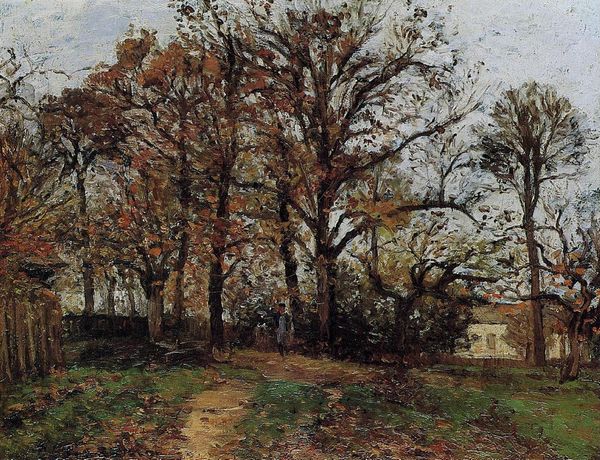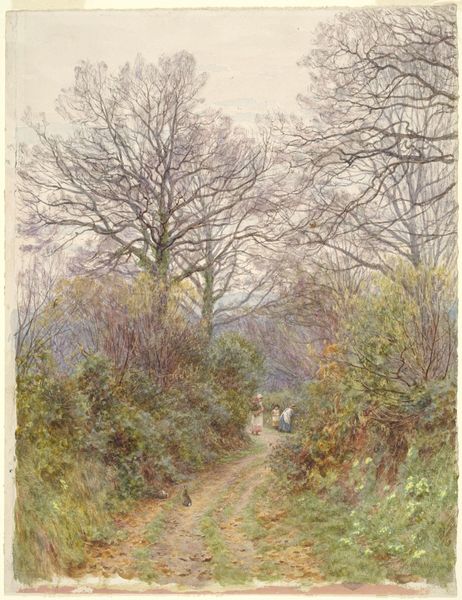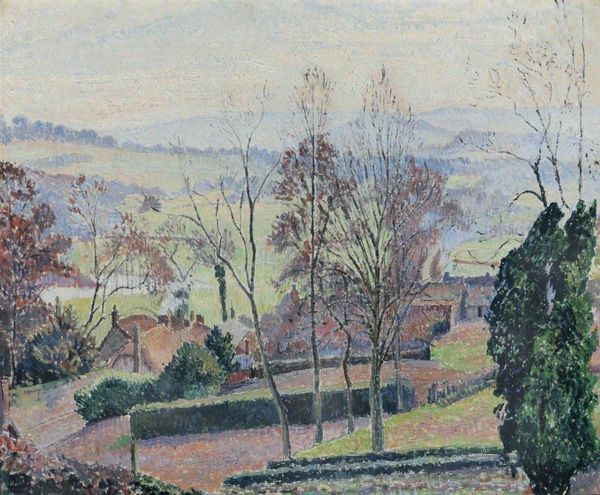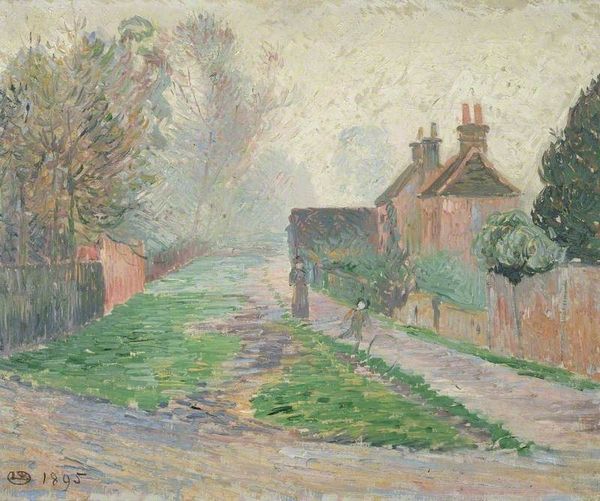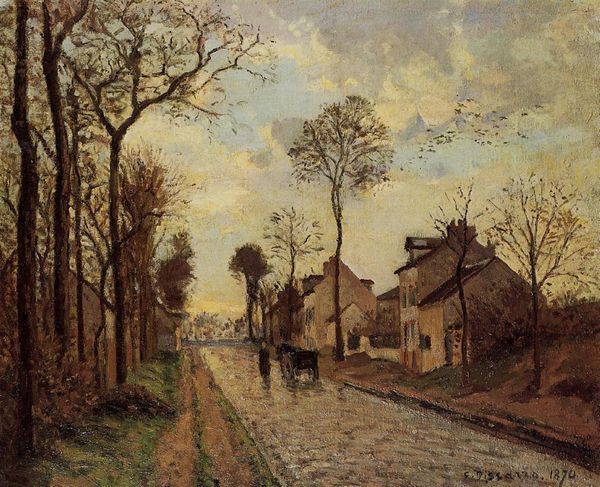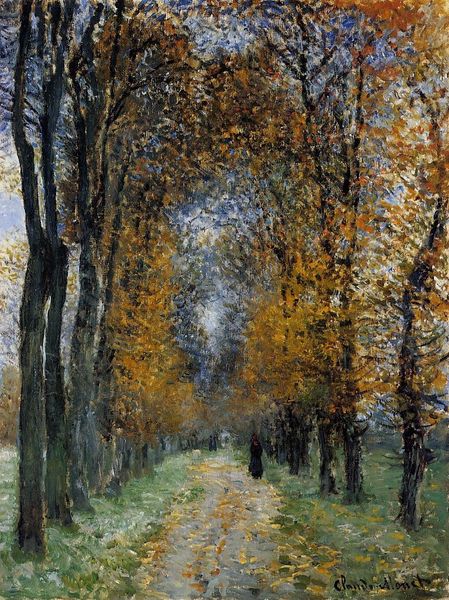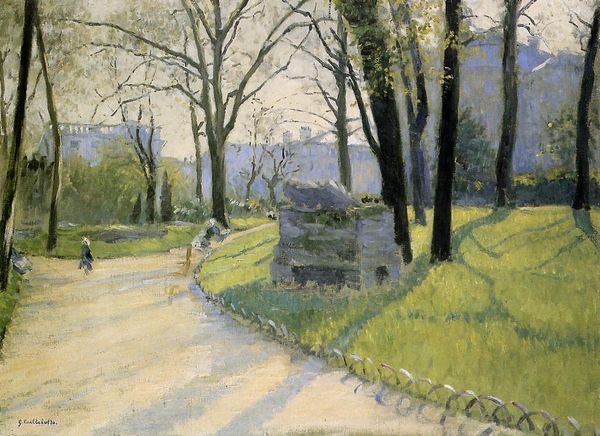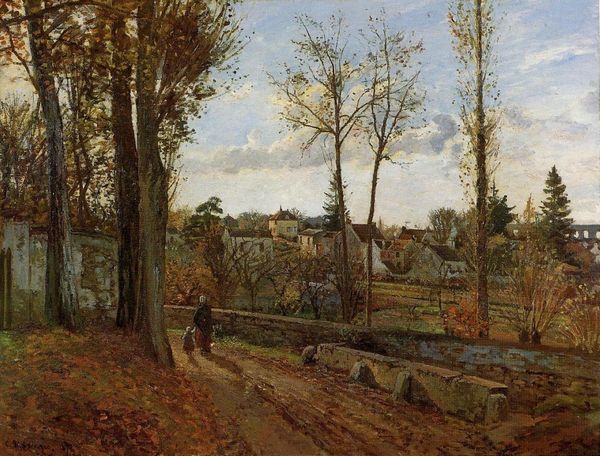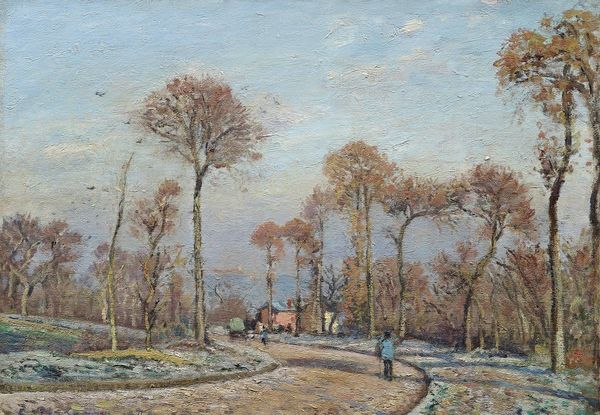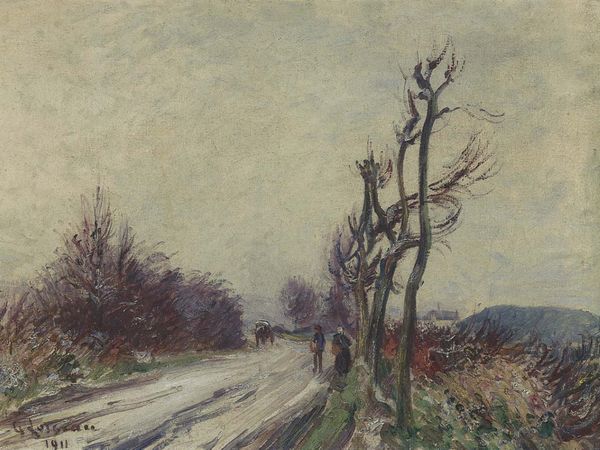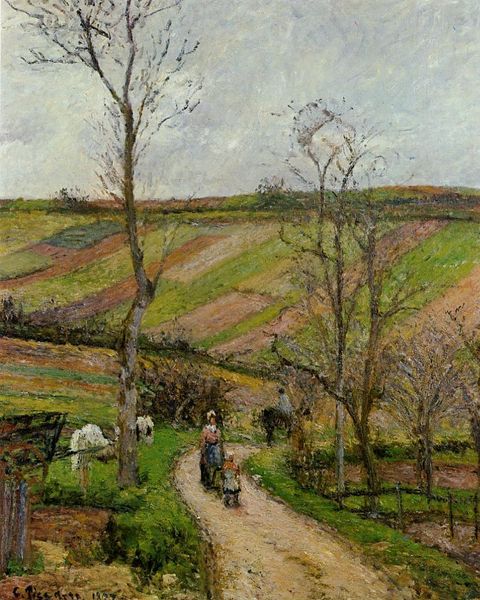
Copyright: Public domain
Editor: This is Lucien Pissarro's "Crockers Lane, Coldharbour," painted in 1916 using oil paints. It strikes me as a very peaceful, muted scene, almost like a memory fading at the edges. What do you see in this piece? Curator: Immediately, I am struck by the pathway. Roads, paths… these are ancient symbols of journeys, of life’s path. Notice how it draws us in, visually and perhaps emotionally. It makes me wonder, where does this path lead, and who has walked it before? Think of the emotional weight a pathway holds. Editor: That's interesting. It almost feels like the path is disappearing into the distance. Is there a sense of loss connected with the landscape? Curator: Loss, perhaps not overtly. But think of landscape paintings as documents. Pissarro painted this during World War I. Even bucolic scenes carried an awareness of loss, societal disruption. These paths were also ways home for many who would never return. It's about evoking a sense of rootedness amid such a crisis, don’t you think? Editor: I hadn't thought about the war at all when I first saw it, but knowing that context makes the image feel heavier. It changes the reading entirely. Curator: Indeed, the muted colours, the solitary figures… They carry the emotional weight of a generation experiencing great turmoil. Visual symbols shift with the cultural winds. They can speak to collective memory in subtle but profound ways. It asks us to consider not just what we see, but what the image remembers. Editor: It’s incredible how much history can be embedded in a landscape painting. It certainly prompts more reflection than I initially expected. Curator: And hopefully, the exploration of such imagery will grant you a better understanding of art, cultural memory, and even your own emotional response.
Comments
No comments
Be the first to comment and join the conversation on the ultimate creative platform.
